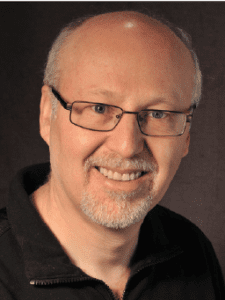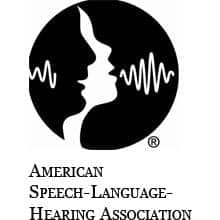Back to Basics | March 2016 Hearing Review
Clinically, one may see a bilingual client and wonder whether there should be a different set of electro-acoustic parameters for the two languages of interest. Some research has been performed in this area and most has been summarized by measures such as the Speech Intelligibility Index, or SII. The SII has been used widely, quite often as a tool in the clinical assessment of hearing aids.
The SII tells most of the story, but is far from the entire picture. The SII, as implemented in some clinical real-ear measurement devices, is typically based on English and not other languages, and it also provides no direct information on important syntactic items in a sentence that may have inherently low speaking intensity. That is, whereas the SII can provide information on the various speech sounds or phonemes, it does not provide information on word-level and sentence-level cues that may be very important as well.
If the cartoon character Buzz Lightyear was reimagined as a linguist or an audiologist, I am sure that his battle cry would not be, “To infinity and beyond!” but rather, “To the word and beyond!”
An example of a word-level issue is Japanese, and to a lesser extent, Vietnamese, where a typical word may consist of a consonant-vowel-consonant (or CVC) structure. In order for the quieter consonant following the more intense vowel to be audible, there should be a sufficient rapid compression release time.
A clinical suggestion is to implement a quicker release time for speakers of Japanese and Vietnamese versus a fitting for someone with a similar audiometric loss who is a speaker of English. If a person is bilingual, one program can be set for English and another for Vietnamese (with a shorter release time on the compression system).
Going beyond the word, we can look at Hindi-Urdu (or Korean, Iranian/Farsi, Turkish, Armenian, Somali, etc) for an example of a sentence-level difference that would not be present on measures like the SII. Hindi-Urdu, like most languages that have a Subject-Object-Verb (SOV) word order, has “postpositions” rather than prepositions that are found in Subject-Verb-Object (SVO) languages such as English. Postpositions (eg, in, on, under, behind) in these SOV word-order languages may be sentence final and, as such, would be of low intensity.

Figure 1. Increase in gain desired for soft level sounds for Japanese/English bilingual speakers for the Japanese program as compared to the English program. Depending on the subject, 3-6 dB more gain for soft level inputs was desired for the Japanese program than the English program.
There is nothing specific to these languages about the last word in a sentence being of low intensity (this is a normal characteristic of all speech where we simply are running out of air at the end of a sentence, so the last word or two is of lower intensity); it is that, in SOV word-order languages, the problem is worse. That is, the quiet word final non-noun elements, coupled with running out of air, result in even lower intensity.
Postpositions can be linguistically very important, and if they are not as audible because of their position in a sentence, this could have ramifications for intelligibility. A clinical solution to this potential problem would be setting the WDRC circuitry to generate more gain for quieter sounds than for an “English program.” This has been confirmed experimentally1 and data is shown in Figure 1 to support this hypothesis.
Soft level speech isn’t just for the quieter sibilant sounds in language; it is also for ends of sentences, especially in those non-English SOV word-order languages. The SII can provide information on the phonemes of a language, but one needs to go beyond the phoneme to the word and the sentence as well.
Reference
1. Chasin M. How much gain is required for soft level inputs in some non-English languages? Hearing Review. 2011. (9): 10-16.
Marshall Chasin, AuD, is an audiologist and director of research at the Musicians’ Clinics of Canada, Toronto. He has authored five books, including Hearing Loss in Musicians, The CIC Handbook, and Noise Control—A Primer, and serves on the editorial advisory board of HR. Dr Chasin has guest-edited three special editions of HR on music and hearing loss (August 2014, February 2009, and March 2006), as well as a special edition on hearing conservation (March 2008).
Correspondence to: [email protected]
Original citation for this article: Chasin M. Back to Basics: Going Beyond the Phoneme…to the Word and Beyond! Hearing Review. 2016;23(3):12.?
Image credits: Marshall Chasin; copyright Pindiyath100 | Dreamstime







Very interesting. I’ve been meaning to read up on this for awhile. When i read about it, it’s in the context of acoustics, e.g. speech clarity inside reverberant spaces, etc. Can you link me to something about that, too?
Hi Kathi:
Reverberation is one of the most ill defined concepts in our field. It’s unlike signal to noise ratio (SNR) where we can measure the difference between the sound level of the signal, and that of the noise.
In the case of reverberation we need to define the time conditions as well as the exact measure.
In the case of time, we have the reverberation time for the early reflections (less than 50 msec) and then another different reverberation time for the reflections arriving later. It is not clear which of these to use in an actual listening environment.
We’re not even sure how to measure reverberation time–is it the commonly used time that a signal dies off to a level that is 60 dB quieter than the peak (RT60), or is another measure more appropriate?
These are both issues that audiologists and acousticians have been trying to deal with since the time of Sabine, who was one of the first to study this topic.